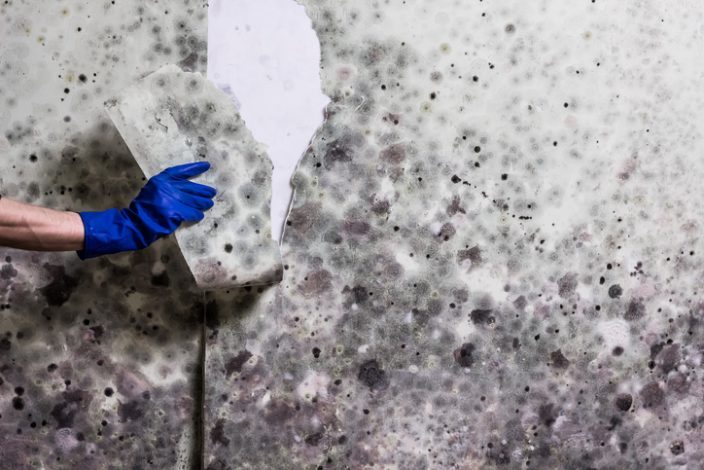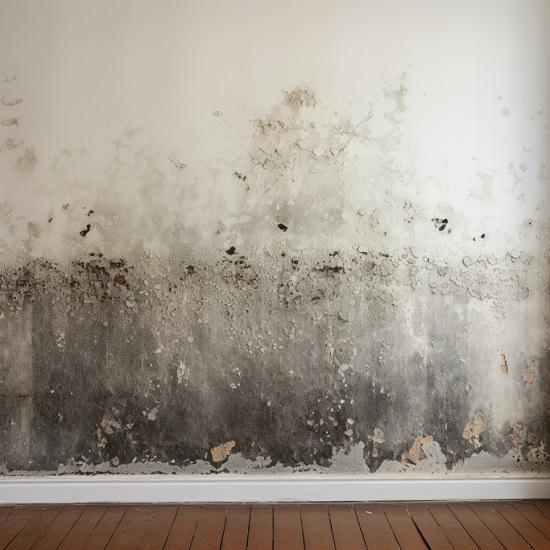Secret Steps for Successful Blog Post Mold And Mildew Remediation
Resolving mold and mildew concerns in a timely and efficient way is crucial for maintaining a healthy interior atmosphere. Effectively completing mold remediation is a complex procedure that requires interest to information and adherence to particular protocols. From examining dealt with locations to executing moisture control measures, each action plays an essential function in ensuring the effectiveness of the removal procedure. There are essential post-remediation actions that are just as essential but frequently neglected. These actions not only confirm the success of the remediation initiatives however likewise add to stopping future mold growth.
Examination of Treated Locations
Upon completion of the mold and mildew remediation procedure, a detailed evaluation of the dealt with locations is necessary to make certain the efficiency of the removal initiatives. This assessment works as a crucial step in the post-remediation stage to verify that the mold elimination and cleaning procedures succeeded in removing the mold problem and bring back a safe indoor atmosphere. The examination should be conducted by qualified experts that have the expertise to evaluate the remediated areas carefully.
These include aesthetic evaluations to check for any type of indications of mold and mildew development or water damages, moisture levels to validate that the area is totally free and completely dry of excess humidity that might advertise mold re-growth, and air top quality screening to make certain that the interior air is risk-free to breathe. Additionally, the assessment might include utilizing specialized devices such as dampness meters and thermal imaging electronic cameras to find surprise mold and mildew or wetness pockets that can lead to future mold problems if left unattended.

Dampness Control Measures
Effective wetness control steps are vital for stopping mold and mildew development and preserving a healthy and balanced interior setting. To achieve this, it is vital to resolve resources of wetness within the building. Correct ventilation is essential to controlling humidity degrees. Installing exhaust followers in kitchen areas and restrooms can help get rid of excess moisture. Furthermore, utilizing dehumidifiers in damp locations can aid lower moisture degrees, making it harder for mold and mildew to flourish.
Frequently maintaining the structure and inspecting's exterior can also avoid dampness intrusion. Post Mold Remediation Report. Making certain that gutters are clear, downspouts straight water away from the structure, and the roof remains in excellent problem can assist prevent water from seeping right into the structure. Appropriately sealing doors and windows can likewise assist keep moisture out
Any kind of spills or leaks should be cleaned and dried out within 24-48 hours to protect against mold development. By executing these moisture control measures, the danger of mold repeating can be dramatically lowered, creating a healthier indoor setting.
Appropriate Air Flow Assessment
An essential aspect of making sure a healthy and balanced remove mold with baking soda indoor environment blog post mold and mildew removal is carrying out a comprehensive assessment of the ventilation system. After mold remediation. Correct air flow evaluation plays an important duty in protecting against future mold growth and maintaining air top quality within the affected space. During the evaluation, specialists examine the effectiveness of the air flow system, looking for any clogs, leakages, or breakdowns that can prevent proper air flow. It is vital to ensure that the air flow system is appropriately sized for the area it serves and that it fulfills market requirements for air exchange prices.
Moreover, assessing the air flow system includes taking a look at the circulation of air throughout the location to identify any type of locations of inadequate blood circulation where dampness and pollutants might gather. Correct air flow not just helps in regulating humidity levels however likewise help in getting rid of airborne mold spores and other contaminants, thereby improving overall indoor air high quality. By addressing any type of air flow problems upload mold removal, residential or commercial property proprietors can produce a much healthier and extra comfy atmosphere for owners while reducing the threat of mold re-infestation.
Cleansing and Sanitation Protocols
To make sure extensive mold and mildew remediation, thorough adherence to details check my blog cleansing and sanitation protocols is critical. Cleansing and disinfection protocols play an essential function in the post-mold removal phase to avoid the reappearance of mold and mildew growth and ensure a risk-free and healthy and balanced environment.
After the preliminary cleaning, complete disinfection of the influenced locations is required to eliminate any kind of staying mold spores and prevent their proliferation. This step is vital in you can try this out stopping the spread of mold to other components of the building. Furthermore, executing precautionary measures such as using mold and mildew preventions and preserving appropriate air flow can help minimize the threat of future mold and mildew infestations. By adhering to strict cleaning and disinfection protocols, homeowner can make sure the effective removal of mold and mildew and produce a healthy and balanced interior setting for residents.
Tracking and Maintenance Plan
Implementing a routine surveillance and maintenance strategy is necessary for ensuring the lasting performance of mold and mildew remediation initiatives. Once mold and mildew remediation is completed, it is essential to establish a monitoring schedule to assess the success of the removal process.
Furthermore, developing a maintenance strategy is vital to avoiding future mold and mildew problems. Regular upkeep not just assists in avoiding mold however likewise contributes to maintaining a healthy and balanced interior atmosphere - what to do after mold remediation.
Conclusion
Finally, successful article mold remediation includes complete evaluation of treated areas, execution of dampness control procedures, analysis of proper ventilation, adherence to cleansing and disinfection protocols, and facility of a tracking and upkeep plan. These essential actions are important to guarantee that mold growth is efficiently gotten rid of and protected against from recurring in the future. By complying with these guidelines, residential or commercial property owners can keep a healthy and balanced and safe setting for occupants.
Upon conclusion of the mold remediation process, an extensive inspection of the dealt with locations is crucial to ensure the effectiveness of the removal efforts. These consist of aesthetic assessments to check for any type of indications of mold growth or water damages, wetness degrees to confirm that the location is dry and totally free of excess humidity that can advertise mold re-growth, and air quality testing to ensure that the interior air is risk-free to breathe. Furthermore, the examination might entail using specialized tools such as dampness meters and thermal imaging cameras to spot covert mold or dampness pockets that could lead to future mold and mildew issues if left untreated. By attending to any ventilation concerns post mold and mildew remediation, property owners can create a healthier and much more comfortable setting for owners while reducing the threat of mold re-infestation.

Comments on “Crafting an In-depth Post Mold Remediation Report”